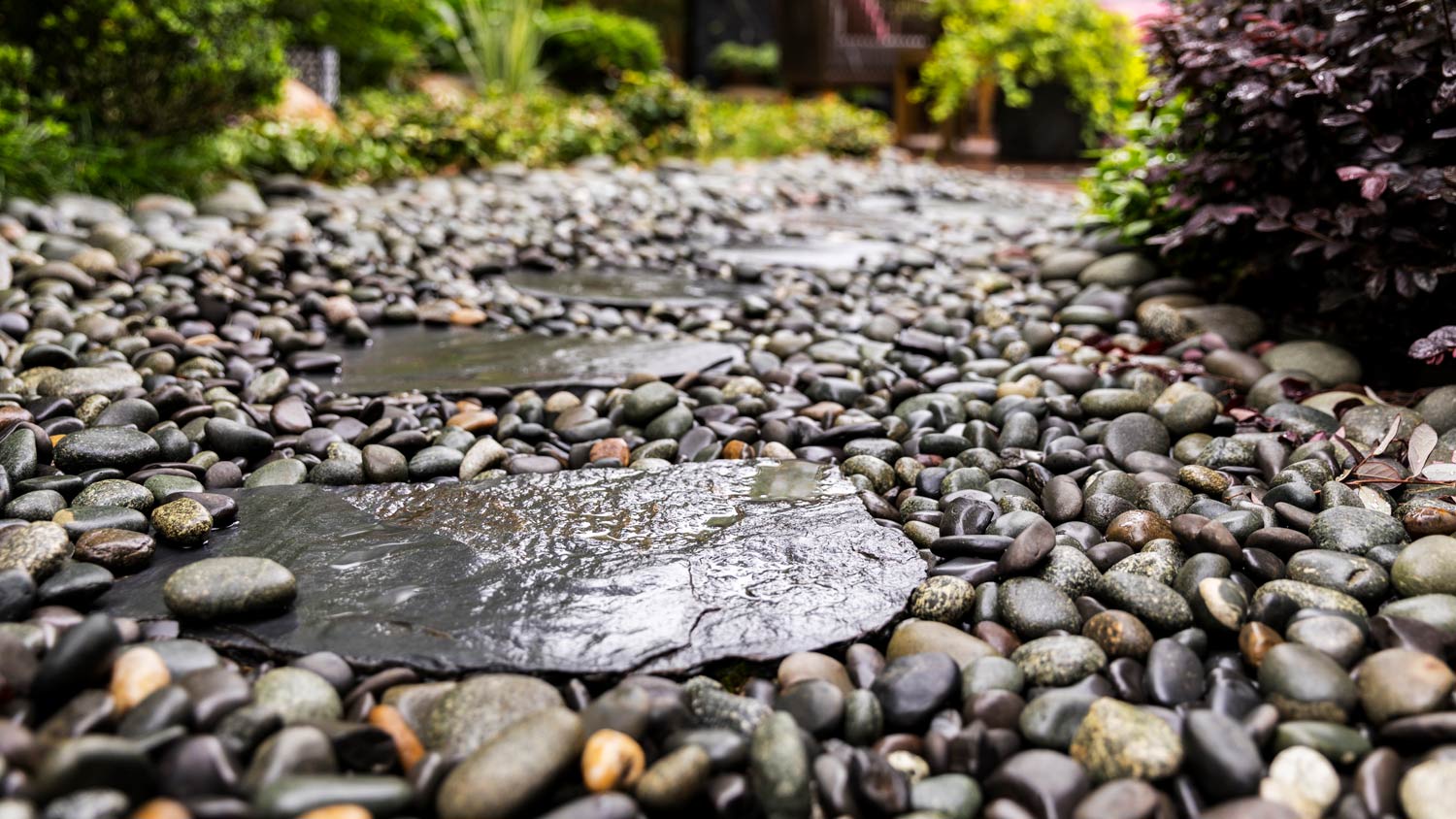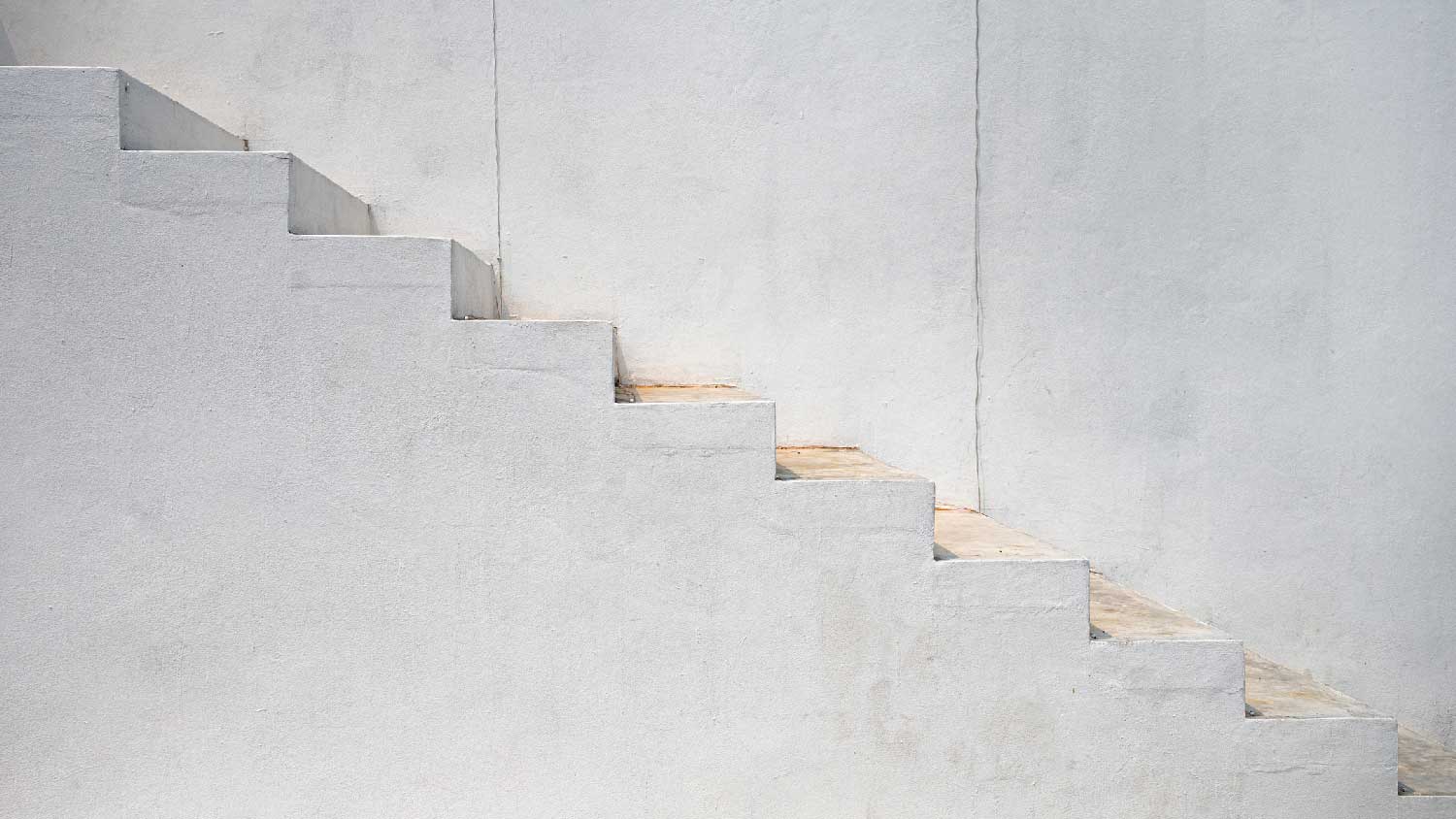
The cost of stone steps can vary considerably depending on the material you choose and how much labor is required. This guide shows you the cost of popular stone steps and all the extra fees you need to consider when tackling this project.
To seal or not to seal, that is the question


Sealing pavers enhances their appearance and protects them from stains, mold, and erosion.
Concrete, brick, and stone pavers can all benefit from sealing.
Choose acrylic sealant for a glossy finish or water-based sealant for a more natural look.
Seal your pavers during mild weather with no moisture or humidity in the forecast.
Pavers should be sealed every three to five years, depending on what type of weather they’re exposed to.
Installing a beautiful patio can take your outdoor space from muddy mess to garden-party-ready almost overnight. But before you bust out the cocktails, you’ll want to use a paver sealer to protect your new patio pavers. Sealing your pavers will help extend their life and protect them from the elements.
In addition to protecting your pavers from absorbing stains, there are several other benefits to sealing pavers, as well as a few cons.
Enhances the colors and beauty of the pavers
Makes pavers easier to clean and maintain
Prevents stains from absorbing into the pavers
Makes it harder for mold and mildew to build-up
Helps prevent substances such as oil or tree sap from penetrating the pavers
Prevents fading
Protects from erosion, which will, in turn, prevent loose pavers
Sealant is an added cost (1 gallon of sealant costs an average of $30 and covers 250 square feet)
Sealing takes additional time to apply
You will have to reapply every 3–5 years
Sealant can cause damage to nearby plants
Whether it’s a brand new paver patio, a beautiful walkway, or you’ve used pavers on your driveway, you might be wondering if you need to add a sealant. The short answer is yes.
Concrete is very porous, which means it can absorb stains very quickly. After all the hard work and the cost of installing concrete pavers, you’ll want to protect them from the elements to prolong their life.
With a little effort and paver maintenance, a sealant will keep pavers looking new for years to come.
While concrete pavers are the most common, there are other paver types that can benefit from sealing. You can also use sealant on brick pavers or stone pavers.
Using sealant on your brick or stone pavers will enhance their appearance and prolong the life of the brick or stone, as well as help prevent stains, discoloration, fading, and mildew.

To get ready to apply a paver sealant, you’ll need to make sure you’ve thoroughly cleaned your pavers. Even freshly installed patios have dust and debris, so you’ll at least want to hose your pavers down and allow them to dry completely.
Once dry, give them one more sweep—it’s outdoors, after all—to be sure they are as clean as possible before applying sealant. Remove any furniture or other outdoor items from the area you plan to seal.
Just like choosing paint, you’ll have many options when it comes to deciding on a sealant. Select between a water-based sealant or an acrylic. Both types offer similar protection, so the difference comes down to appearance, so it depends on how you want the finished product to look after you’ve applied your paver sealant,
Water-based sealants offer a more matte or natural look. Acrylic paver sealants are glossier, and you can even choose between high-gloss, semi-gloss, color-enhancing, wet look, and more.
For patios and walkways, allow the paver sealant to dry for at least 24 hours, although it can take as long 72 hours. If you’ve decided to seal your driveway, make sure you wait at least three days before you drive a car on it.
Pavers are not immune to the seasons or the weather. You should aim to apply your paver sealant on a mild, sunny day with low humidity and no rain in the forecast for at least 24 to 48 hours.
Ideally, apply when the temperature range is between 60 to 75 degrees Fahrenheit. Depending on where you live, this could be the spring season, midsummer or early fall, and in some southern states like Florida, late winter.
Never apply sealant on a windy day. It will blow the sealant onto your garden beds and trees, potentially damaging them. Not to mention, you’ll spend most of your time removing errant leaves and twigs that keep blowing in your path.
If possible, try to apply your sealant early in the day to allow for maximum drying time while the weather holds.
Most paver sealers will need a refresh every 3 to 5 years, depending on what kind of weather they’ve been exposed to. Seasonal conditions can greatly affect your pavers, too.
Factors like salt to de-ice driveways and walkways, frequent heavy rainfall or flooding, and constant bright sun can all affect the staying power of your sealant, so you may need to apply more often.
If you’d prefer to spend your weekend planning for that garden party, consider hiring a paver contractor who can install and seal your pavers for you. Even if your patio is already installed, you can find a paver installation company in your area that can apply the paver sealant for you.
Looked up some services around me and came across tycoon seal coating. Gave Camden a call and got a quote for the work I needed done immediately. By the next day Camden and his crew were there, and can I say what a wonderful job they did. I couldn’t believe my eyes. I’d recommend them to...
Excellent company that provides top notch service with professional, friendly and respectful staff. Thanks to Terence for an outstanding job! Our patio and driveway look brand new! Highly recommend their services and our highest commendation for a company that preserves the planet with...
Vinnie came up with a lot of suggestions for my project in backyard. Had stone around pool he removed large stones and replaced with smaller ones. put trees and bushes in and putting lighting around. Project was completed in 3 days. I am very pleased with him. He knew what I was looking...
Randee and Carolina Flooring were great work with on this project. It was done quickly and the carpet is plush and comfortable. Beyond my expectations.
I recently had the pleasure of working with McMurray Builders for a complete bathroom remodel, my wife and I are absolutely thrilled with the results. From start to finish, the team demonstrated exceptional skill, professionalism, and dedication to quality. The remodel included installing...
Followed up with us and got us in the schedule very timely. They were extremely thorough and worked directly with the insurance company.
I opted for this company due to my belief that family-owned businesses prioritize customer care over large corporations, and my instincts were proven right! When requesting a quote, I had a pleasant conversation with Sales Associate Max, who was incredibly helpful and professional without any...
Yonny was very professional, pleasant and efficient. I thought we would need replacement parts for our washing machine. He was able to clean and repair the machine as is. Would definitely recommend Yonny !
Outstanding. Showed up on time and did an excellent job with the lawn. Highly recommend. A+++
Tony did a terrific job hanging my mirrors and artwork; he was very exacting, making sure the placement was just where I wanted each one. He was also very accommodating of my schedule and availability and communicated frequently with me until we could schedule a time that worked for both of...
From average costs to expert advice, get all the answers you need to get your job done.

The cost of stone steps can vary considerably depending on the material you choose and how much labor is required. This guide shows you the cost of popular stone steps and all the extra fees you need to consider when tackling this project.

While a stone wall typically costs thousands of dollars, the value it brings to your home can raise its value both aesthetically and monetarily.

Pea gravel is a good-looking, versatile landscaping stone that's a favorite of the pros. Read about how much pea gravel costs for both installation and the stone itself.

How much pea gravel do I need? This calculator will help you determine quantity and cost for accurate budgeting for your project.

Not sure how to find or hire a paver contractor? Learn everything you need to know, from questions to ask to qualifications, so you can transform your outdoor space with pavers.

Determining how much concrete you need for stairs can involve some tricky math. Our concrete stair calculator simplifies the process. Here's how to measure.